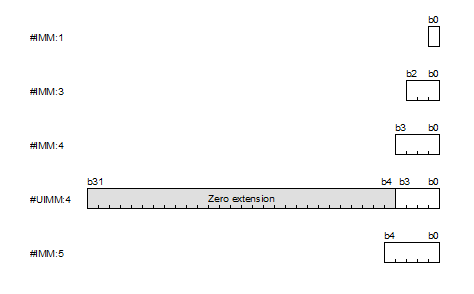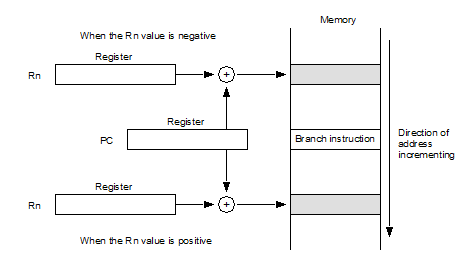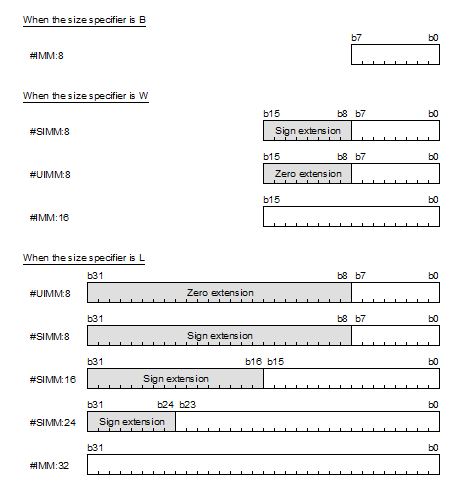
|
|
|
The operand is the specified register. In addition, the Rn value is transferred to the program counter (PC) when this addressing mode is used with JMP and JSR instructions. The range of valid addresses is from 00000000h to FFFFFFFFh. Rn (Rn = R0 to R15) can be specified. |
|
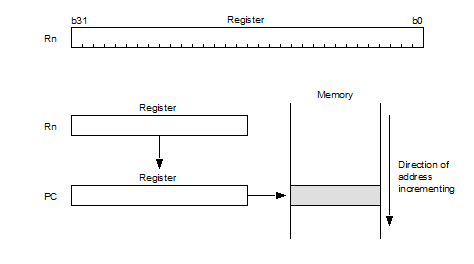
|
|
|
The value in the specified register is the effective address of the operand. The range of valid addresses is from 00000000h to FFFFFFFFh. [Rn] (Rn = R0 to R15) can be specified. |
|
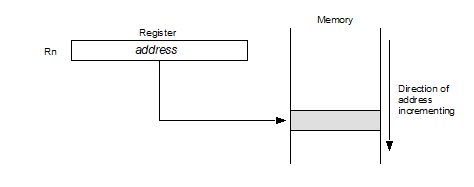
|
|
|
The effective address of the operand is the least significant 32 bits of the sum of the displacement (dsp) value, after zero-extension to 32 bits and multiplication by 1, 2, or 4 according to the specification (see the diagram at right), and the value in the specified register. The range of valid addresses is from 00000000h to FFFFFFFFh. dsp:n represents an n-bit long displacement value. The following mode can be specified: dsp:8[Rn] (Rn = R0 to R15), and dsp:5[Rn] (Rn = R0 to R7) is used only with MOV and MOVE instructions. |
|
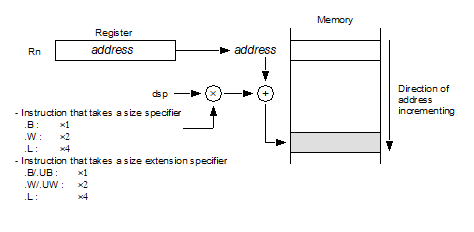
|
|
|
The value in the specified register is the effective address of the operand. The range of valid addresses is from 00000000h to FFFFFFFFh. After the operation, 1, 2, or 4 is added to the value in the specified register according to the size specifier: .B, .W, or .L. This addressing mode is used with MOV and MOVU instructions. |
|
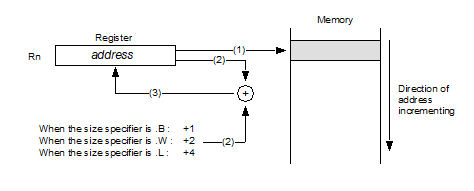
|
|
|
According to the size specifier: .B, .W, or .L, 1, 2, or 4 is subtracted from the value in the specified register. The value after the operation is the effective address of the operand. The range of valid addresses is from 00000000h to FFFFFFFFh. This addressing mode is used with MOV and MOVU instructions. |
|
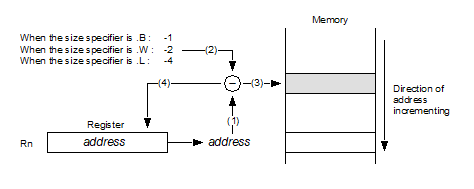
|
|
|
The effective address of the operand is the least significant 32 bits of the sum of the value in the index register (Ri), multiplied by 1, 2, or 4 according to the size specifier: .B, .W, or .L, and the value in the base register (Rb). The range of valid addresses is from 00000000h to FFFFFFFFh. This addressing mode is used with MOV and MOVU instructions. |
|
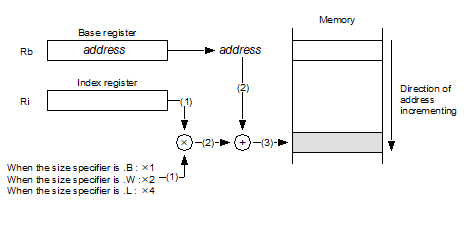
|
|
|
The operand is the specified control register. This addressing mode is used with MVFC, MVTC, POPC, and PUSHC instructions. The PC is only selectable as the src operand of MVFC and PUSHC instructions. |
|
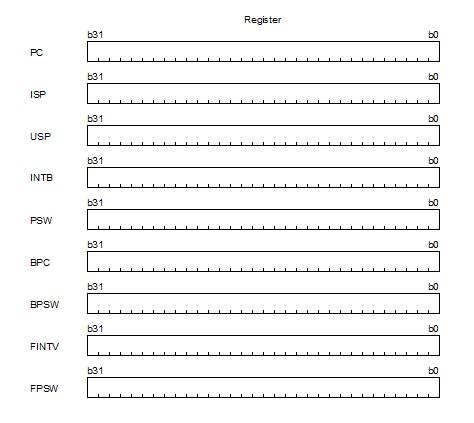
|
|
|
The operand is the specified flag or bit. This addressing mode is used with CLRPSW and SETPSW instructions. |
|

|
|
|
When the branch distance specifier is .S, the effective address is the least significant 32 bits of the unsigned sum of the value in the program counter (PC) and the displacement (pcdsp) value. The range of the branch is from 3 to 10. The range of valid addresses is from 00000000h to FFFFFFFFh. This addressing mode is used with BCnd (where Cnd==EQ/Z or NE/NZ) and BRA instructions. |
|
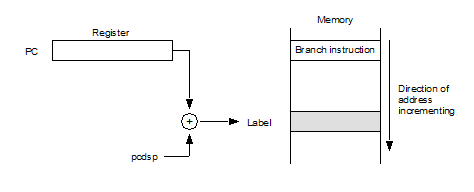
|
|
|
When the branch distance specifier is .B, .W, or .A, the effective address is the signed sum of the value in the program counter (PC) and the displacement (pcdsp) value. The range of pcdsp depends on the branch distance specifier. For .W:-32768 ≤ pcdsp:16 ≤ 32767 For .A:-8388608 ≤ pcdsp:24 ≤ 8388607 The range of valid addresses is from 00000000h to FFFFFFFFh. When the branch distance specifier is .B, this addressing mode is used with BCnd and BRA instructions. When the branch distance specifier is .W, this addressing mode is used with BCnd (where Cnd==EQ/Z or NE/NZ), BRA, and BSR instructions. When the branch distance specifier is .A, this addressing mode is used with BRA and BSR instructions. |
|
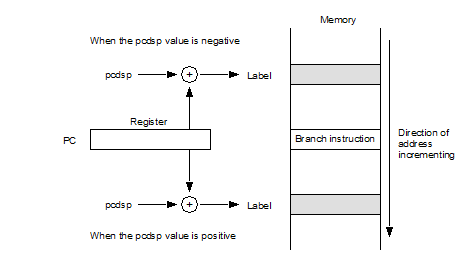
|
|
